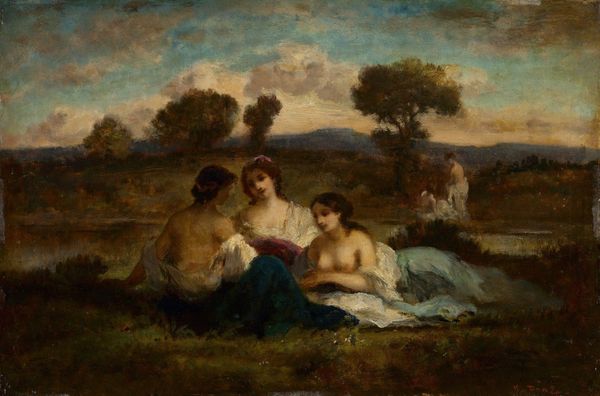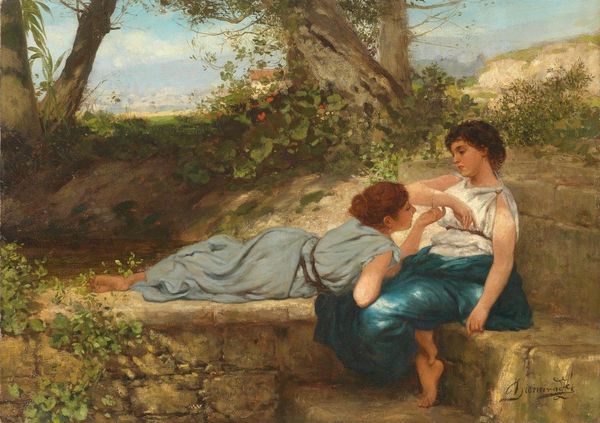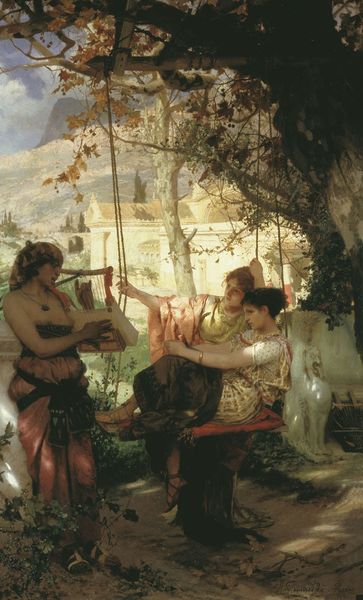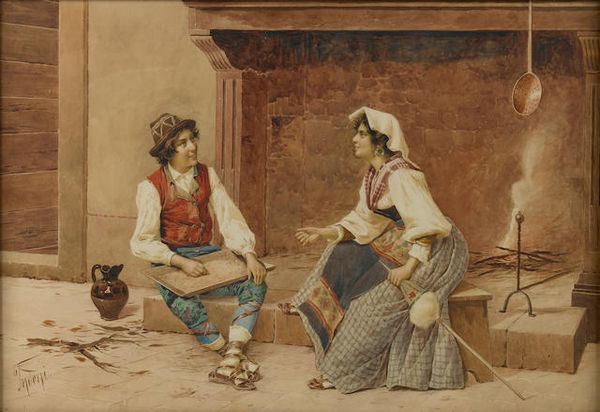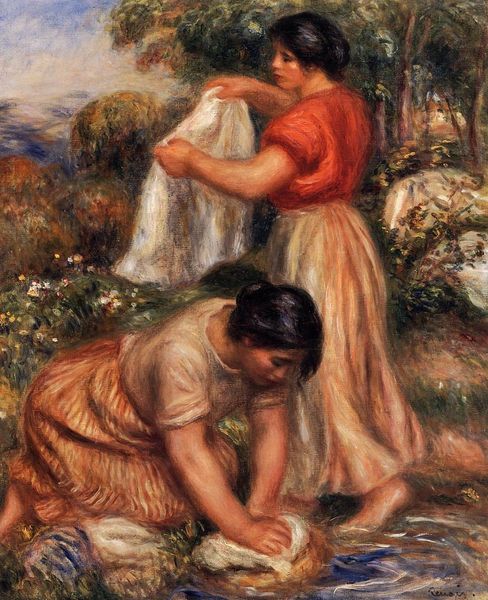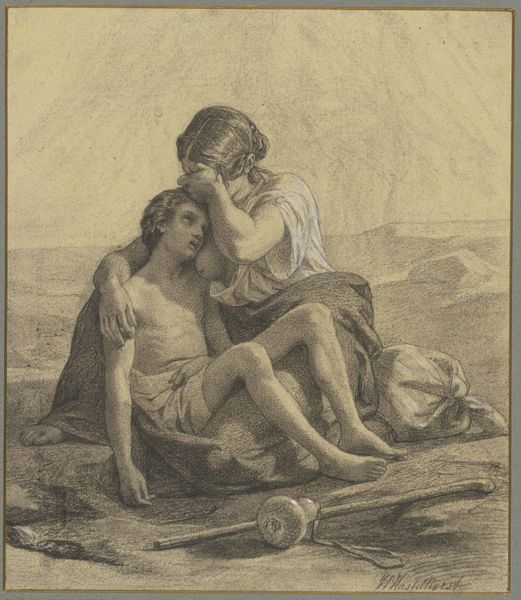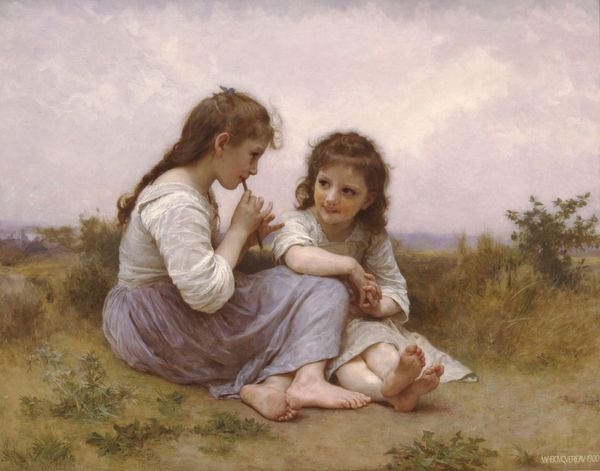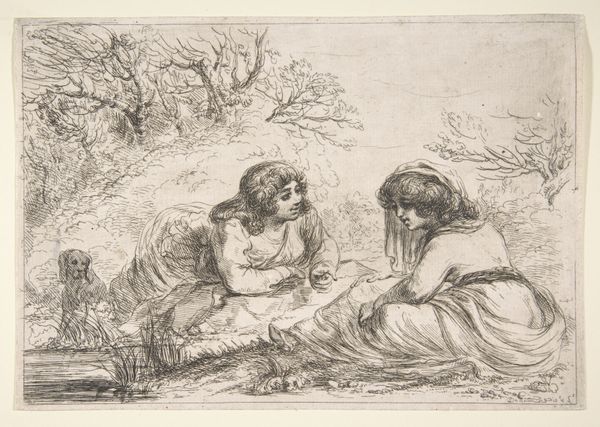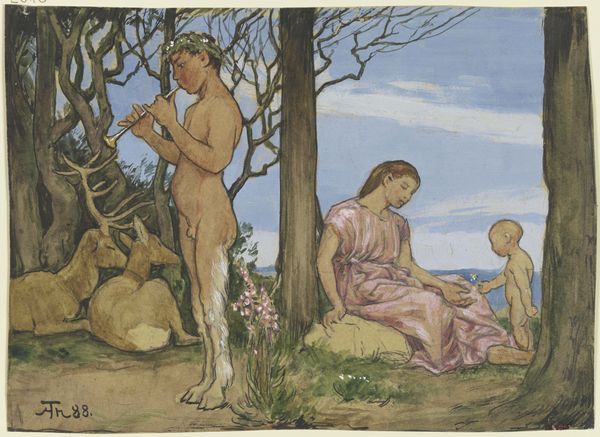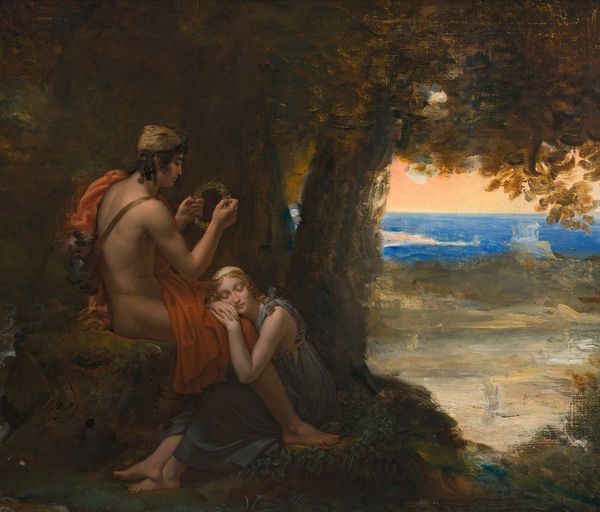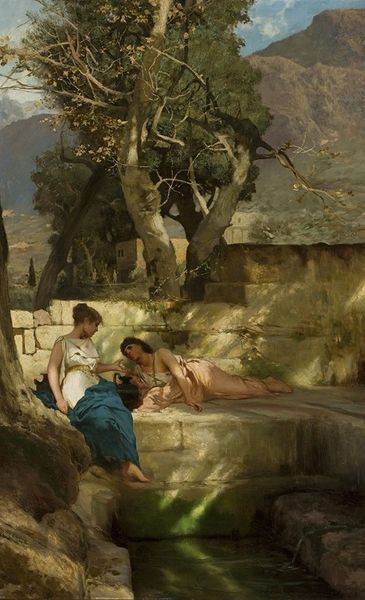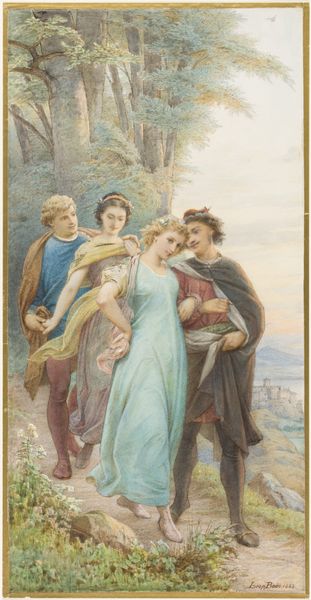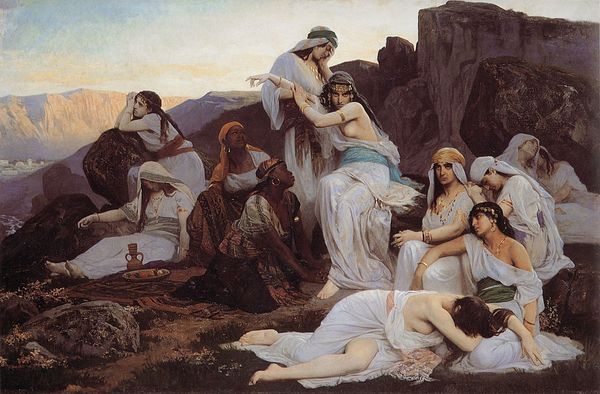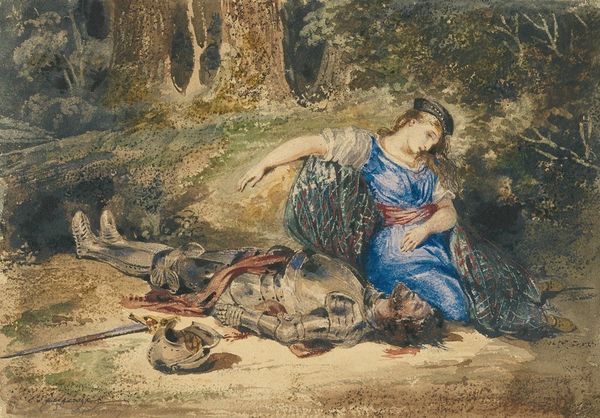
drawing
#
portrait
#
drawing
#
landscape
#
charcoal drawing
#
figuration
#
group-portraits
#
romanticism
#
genre-painting
Copyright: Public Domain
Curator: Before us is "Zwei in der Landschaft lagernde italienische junge Frauen" by Friedrich Karl Hausmann, currently residing here at the Städel Museum. Though undated, it's a striking example of the Romantic era's fascination with Italy. What are your initial thoughts? Editor: There’s a distinct feeling of reverie. The women, rendered in soft charcoal, are lounging with such graceful ease. The landscape feels almost like a dreamscape, muted and hazy. Curator: It certainly evokes a particular mood. The image comes at a time when travel, especially to Italy, became central to notions of education and refinement among the European middle class. These women, Italian subjects, represent an idealized version of that experience. Editor: I see echoes of Arcadia here. The woman with the lute acts as a sort of muse. Playing an instrument traditionally connected to pastoral themes and the romantic ideal of leisure and contemplation. Do you see hints of mythology in this repose? Curator: Interesting point. I'm inclined to see their instrumentation as representing a changing social order. Art began to be viewed as less strictly an aristocratic preserve and more about cultural edification for the burgeoning middle class. Perhaps it is invoking both! Editor: True! Lutes aside, note the headdress, likely associated with ideas of folk traditions or even tropes of exoticism that romanticize the common life and that landscape! Curator: You raise an essential point about visual tropes and cultural reception! The setting plays a huge role. Italian landscape wasn't merely geography; it represented history, artistic inspiration, and even liberty to certain European elites during the late 18th and early 19th centuries. Editor: The way these figures meld into that very setting becomes intriguing, though! Their clothes, their instrument even. I'm interested in that seamless continuity, or rather, in what feels specifically, artfully placed about that harmony. Curator: Precisely! These objects have not only cultural weight, they give Hausmann a way to visualize some of the major transformations shaping art's function, role, and audience in European society. A testament to art and life intersecting as a powerful source of symbolism. Editor: It's all there in this drawing - Hausmann encapsulates the essence of longing for an idealized and somewhat fabricated pastoral simplicity! I leave seeing this in an entirely new light! Curator: I agree. This really enriches our understanding of how art helps people respond to rapid shifts in how we think about history and community.
Comments
No comments
Be the first to comment and join the conversation on the ultimate creative platform.
